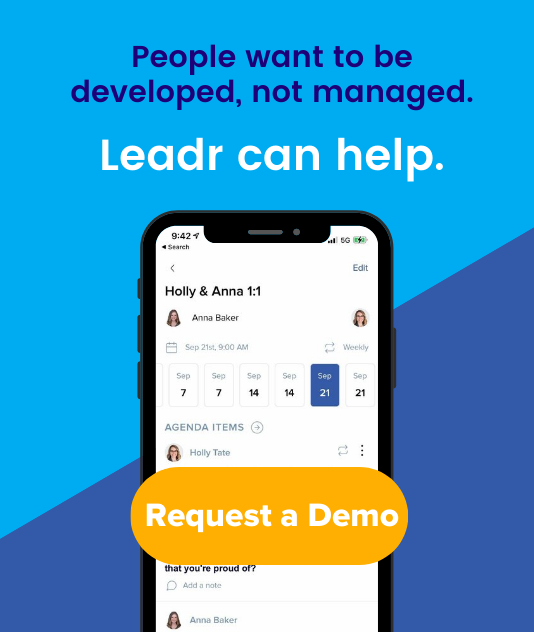Effective Goal-Setting Tips For Each Enneagram Type
How to coach every person on your team towards better goal setting.
When working with others, it’s important to remember that every person has their own unique strengths and tendencies. This can make working with and managing a team seem like an impossible task. But that’s where personality assessments, like the Enneagram, can help.
By learning about the patterns of behavior outlined by the Enneagram, you can help your team to become more productive and successful when it comes to their goals. Here’s a goal-setting tendency and tip for each Enneagram type.
Type One: The Perfectionist
Tendency: Type Ones are motivated by the need to be good and right. They are improvement-oriented which makes goal-setting an enjoyable activity for them.
Tip: Because Ones can be perfectionists, it’s good to remember that goals can be changed and amended along the way. Goals are simply a great way to stay focused and efficient, so don’t get bogged down in the details. Coach your Ones to aim for a 60% perfect path to your goal and then run the plan by a leader or mentor for their thoughts before getting too bogged down.
Type Two: The Helper
Tendency: Type Twos are motivated by their connection with others. They are more likely to stick to a goal that is other-centric rather than self-centric.
Tip: Since Twos are all about connection to others, frame their goals in a way that shows the benefit it’ll bring the team or organization so that it has a deeper meaning. It’s also good for Twos to have someone to hold them accountable and cheer them on to help fulfill that desire for connection.
Type Three: The Achiever
Tendency: Type Threes are motivated by success. This ambition means that goal-setting comes naturally to a Three.
Tip: While success is a driving factor for Threes, it is important that they learn to define success outside of competition or achievements. Their intense focus makes setting one goal at a time optimal. Coach them by reminding them that getting the job done is important, but keeping the big picture in mind and focusing on the outcomes of their effort is key.
Type Four: The Individualist
Tendency: Type Fours want to be authentic, unique individuals. Goal-setting complements their love of possibilities as long as they feel inspired to see it through.
Tip: Since Fours are great at seeing the big picture, but tend to get overwhelmed by the details, it is important to help them create and celebrate the small action steps that lead them to achieve their goals. Include them in the goal setting process to allow their creative side to flourish.
Type Five: The Investigator
Tendency: Type Fives are curious and independent. Goal-setting can keep Fives from getting distracted by new ideas.
Tip: Because Fives like to feel competent, it is important for them to set goals that feel like a stretch and challenge them to think in a new way. They may need to be reminded that it is okay to feel awkward and somewhat incompetent as they learn new things. Breaking goals down into milestones will help them make it to the finish line if they tend to shift focus easily.
Type Six: The Loyalist
Tendency: Type Sixes are dedicated and detail oriented, but can get caught up in the worst-case scenario. Goal-setting helps them overcome analysis paralysis.
Tip: Sixes tend to be thinking several steps ahead to prepare for the worst case scenario. Breaking their goals into small, realistic steps helps them to avoid the feeling that something might go wrong. Encourage them with the reality that goal-setting is about taking one step at a time. Remind them that the outcome of the goal is what matters. How you get there is flexible and it’s okay if plans shift.
Type Seven: The Enthusiast
Tendency: Type Sevens are fun-loving and spontaneous. Setting goals can make a Seven feel tied down.
Tip: Follow-through can be difficult for Sevens.Encourage them to keep the goal front-of-mind by making it their computer screen saver or have a sticky note nearby reminding them of the why behind the work they're doing towards a goal.
If possible, help Sevens learn to delegate some of the tasks that don’t energize them. They are excellent encouragers and can cheer their team on towards reaching the big goal.
Type Eight: The Challenger
Tendency: Type Eights are motivated by independence. They are dreamers at heart, but can struggle with follow-through.
Tip: Eight’s can get distracted by the next exciting idea before following through on the task at hand. Micro-managing an 8 will just frustrate them. Offer them the big-picture goal, but allow flexibility in process of getting it done to let their creativity and pioneer-like mindset to shine.
Type Nine: The Peacemaker
Tendency: Type Nines want to keep the peace and avoid conflict at all costs. Their motivation is "what will make my life and the lives of others easier."
Tip: Nines can have trouble identifying big-picture goals. It's helpful to coach them by giving them the end point followed by time to process and ask questions, and then help them back into the step by step actions that will get them to the goal. Once the list has been created, help them determine which tasks will benefit their main goal. Rank those things in order of importance to identify which tasks to begin working on.
Coaching your team based on their unique strengths helps them feel valued and seen. Find out what enneagram types are on your team and review these tips before meeting with them as a reminder of how to lead them well.
Learn how to build out a customized development plan for your employees with our comprehensive guide and template here.
Share this
You May Also Like
These Related Stories

Crush Your Inner Critic and Boost Your Growth: How Leadr Can Help You Take Control

Is a Daily Standup Meeting Worth Your Time?







No Comments Yet
Let us know what you think